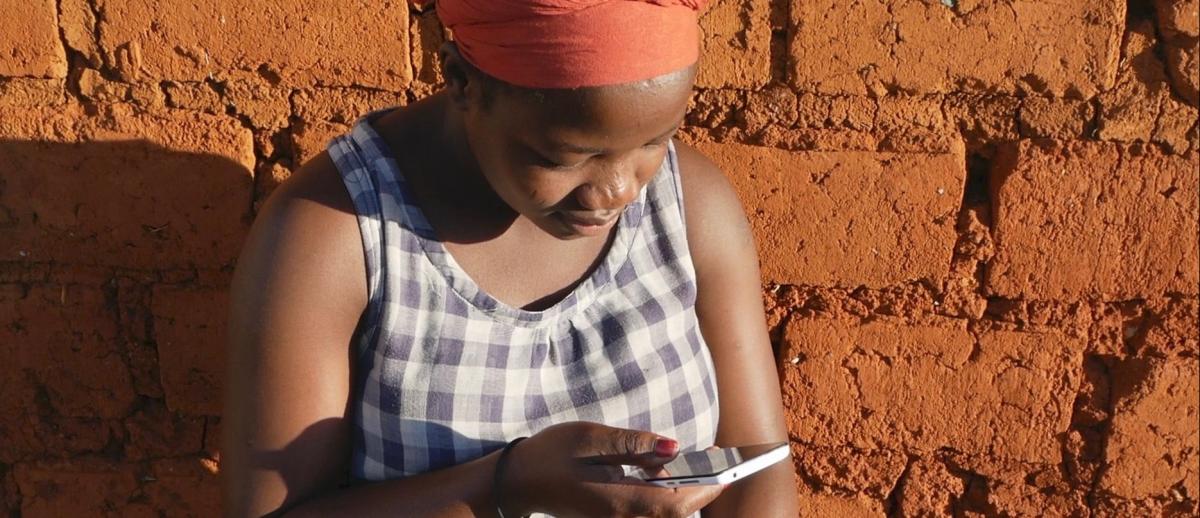What We Can Learn from the Fading Myth of the (African) “Middle Class”
archive


What We Can Learn from the Fading Myth of the (African) “Middle Class”
Less than ten years ago we observed a kind of media hype over the “new” middle class in Asia, Latin America, and Africa. This was considered as a large new group of consumers and the most optimistic researchers underlined that they would also be the backbone of a new global movement towards democracy and good governance (Birdsall 2016). Indeed, income figures justify the idea that there is a growing group of people who have climbed above the US $2.00 per capita/day poverty line. And in Asia and Latin America a considerable part of the population has a per capita income of ten or even twenty US dollars a day. In times of growing critique in post-development and post-colonial studies of development policy, including critique of the concept of “development” itself, this global middle class seems to verify the success of the concept of economic development and economic growth.
This development was especially surprising in the case of Africa, a continent that has long been seen as mired in poverty, war, and disasters. The positive image of African development was fueled by a report published by the African Development Bank, “In the middle of the pyramid,” which offered data relating to the growing middle-income group on the continent. Consulting firms published reports about the new markets and the new consumers. They coined the term “African Lions” (McKinsey Global Institute 2010), reminiscent of the Asian Tigers of the 1980s. But the AfDB report was more nuanced than the enthusiastic media reports. The majority of people in the “middle of the pyramid” were in the so-called “floating class,” the US $2.00 to $4.00 per capita/day category, and just barely escaped poverty. Even with a moderate rise in income, they hardly represent a “middle class” in the global sense (Darbon 2017; Melber 2017). Those with a better income live mostly in North Africa, whereas more than half of the population living south of the Sahara are still poor. The media hype is fading and some of the larger enterprises that invested in the new market are disappointed and have scaled down their economic activities in Africa.
We might simply forget the middle class debate. Or, we may ask what can be learned from the fading myth of the (African) “middle class?” The concept of a class that can be called “the” middle class implies a considerable homogeneity, not only with regard to socio-economic position, but also in respect of lifestyle, attitudes, and political aims. Wouldn’t it be helpful to think twice before transferring the class concept developed in the late 19th and early 20th centuries in Europe, with all its implications, to a new area? This should lead to a discussion of the question of transferability.
Our class concepts are based on Marx or Weber, both of whom define classes and the resulting power differentials either in terms of control over the means of production or in terms of assets and occupation. If we look at research on inequality, socio-cultural differentiation, and social structure in Africa, we find empirical evidence that questions the application of these class concepts. Transferring the class concept to the Global South and to Africa was very popular in the 1970s and 1980s, albeit with some modifications (Neubert 2019b, chapter 3). For example, protagonists employed the notion of bourgeoisie, analyzing African entrepreneurs as comprador bourgeoisie because they doubted the presence of a bourgeoisie in the proper sense. They also coined the concept of a bureaucratic bourgeoisie in view of the crucial economic role of the state and of leading politicians and bureaucrats (Shivji 1976). Yet they found it even more challenging to identify the working class. In parts of South Africa and other countries with a mining industry, there were classical workers, along with dockworkers in the harbors and a few workers in the first large enterprises, but the bulk of the poor were farmers or pastoralists. The small number of white-collar workers seem to be part of the state bourgeoisie, or at least closer to the bourgeoisie.

Miners walk through an underground tunnel at a gold mine in South Africa. (Source: Bloomberg)
Studies from 1980 show that that our notions of one typical occupation or particular control of means of production for the family breadwinner do not apply to Africa. People invest their salary income in a farm or an enterprise, and typically they are workers and employers at the same time (Berry 1985; Kitching 1985). This combination of sources of income holds true up to today. The picture becomes even more complicated when we look into family structures. Some family members with a decent education are successful, have a good job, and have a profitable farm and/or enterprise, and they support family members who are less successful. Thus, families are socio-economically inhomogeneous. Finally, without a stable social security system and with a highly volatile economy, even people with a good income face the risk of downward mobility. Thus, they are not part of a certain “class,” but of a socio-economically heterogeneous network. They share many political interests with farmers, workers, small entrepreneurs, and poor people. For the majority of the African people, either poor or middle-income, social inequality is marked as much by the strength of the network as by individual income or assets (Neubert 2019a).
Our class concepts are based on Marx or Weber, both of whom define classes and the resulting power differentials either in terms of control over the means of production or in terms of assets and occupation. ...[I]n Africa, we find empirical evidence that questions the application of these class concepts.
According to class theory, class correlates with a certain way of life (status in Weberian terms) and with a certain class consciousness. Even Bourdieu’s concept of distinction links class position with lifestyle (Bourdieu 1984). In these concepts, socio-cultural differences follow class. But in studies of socio-cultural differences in Africa, class does not play a decisive role. The most dominant term with regard to cultural differences is ethnicity. Of course, we need to consider that political ethnicity, with ethnic parties, is found only in certain African countries (e.g. Kenya, Zambia), while in other countries like Ghana and Tanzania ethnicity is not a crucial political issue (Elischer 2013). Nevertheless, ethnicity is always an important aspect of identity. It crosses socio-economic differences and is often linked to patron-client structures. In areas with chiefs and kings, this notion has been transferred into modern societies as a neo-traditional system that influences patterns of social positioning, especially at the local and regional levels. In countries where non-urban land use is mostly controlled by neo-traditional authorities, access to these power holders is decisive for many economic enterprises, or simply for survival. In situations of legal pluralism, neo-traditional authorities influence family law and implement customary law with regard to gender roles. Ethnicity and neo-traditional authorities influence social positioning and socio-cultural differences. At the same time, there are studies which show that people actively develop new lifestyles and distance themselves from “tradition.” This is not simply linked to income or occupation or socio-economic position, but is the consequence of individual decisions.
People with a middle income have more possibilities for deciding how to live. Once survival is not at stake, people may choose different consumption preferences, and can save money for investment in an enterprise, in a farm, or in the education of their children. They use these options to create different combinations and consequently, their lives diversify. This diversification does not follow occupation or control over the means of production. People with similar occupations may have different lifestyles. We conceptualize these socio-cultural differences as “milieus” that represent socio-cultural differentiation beyond class (Neubert/Stoll 2017).1 Reducing the concept of class to a question of income ignores this kind of diversification and implies a homogeneity that is simply not there. In the light of these findings, it is surprising that the concept of class is still applied to Africa. It is time to go beyond class with our analyses of inequality, social structure, and social differentiation. We need to develop new concepts that will do justice to the nuanced empirical findings of research in African societies now available.
People with similar occupations may have different lifestyles. [...] Reducing the concept of class to a question of income ignores this kind of diversification and implies a homogeneity that is simply not there.
This does not mean that we will develop a particular sociology for Africa. But we need to choose more open concepts that will allow us to describe societies in the context of global capitalism based on our empirical findings. The path I would like to propose is to start by delinking socio-cultural differences and socio-economic differences. People with similar socio-economic positions, and even the same occupation, may have very different attitudes. This can be observed in Europe, where workers may vote for conservative parties and well-paid intellectuals and entrepreneurs may support the social democrats. We need to analyze lifestyles using empirical data. For Kenya, we have found that there is a considerable diversity within the middle-income group.
Therefore, socio-economic differences cannot be defined simply by control over the means of production or by occupation. There are other criteria, as for example in the Global North where differences can be based on assets like personal savings or access to social security or infrastructure. In Africa, however, the decisive element seems to be the strength or weakness of social networks. Thus, the myth of the middle class is very helpful, because its deconstruction opens up paths for a new analysis of inequality in Africa that goes beyond class.2
1. We refer to Flaig/Meyer/Ueltzhöffer (1993, 55) Who define ‘Milieus’ as “subcultural units within a society which group together people with a similar view of life and way of life” (my translation).
2. For more details, see Neubert 2019b.
AfDB (African Development Bank), 2011. “The middle of the pyramid: dynamics of the middle class in Africa.” Market Brief April 20. African Development Bank.
Berry, Sara S., 1985. Fathers work for their sons. Accumulation, mobility and class formation in an extended Yoruba community. Berkeley: University of California Press.
Birdsall, Nancy 2016. “Middle-class heroes: the best guarantee of good governance.” Foreign Affairs 95, 25.
Bourdieu, Pierre, 1984. Distinction: a social critique of the judgement of taste. Cambridge, Mass.: Harvard University Press.
Darbon, Dominique, 2018. “Turning the poor into something more inspiring: The creation of the African middle class controversy.” In Lena Kroeker/David O'Kane/Tabea Scharrer (ed.), Middle classes in Africa. Changing lives and conceptual challenges. Frontiers of Globalization. Cham: Palgrave, 35-56.
Elischer, Sebastian, 2013. Political parties in Africa. Ethnicity and party formation. New York: Cambridge Univ. Press.
Flaig, Berthold Bodo/Meyer, Thomas /Ueltzhöffer, Jörg 1993. Alltagsästhetik und politische Kultur: zur ästhetischen Dimension politischer Bildung und politischer Kommunikation. Bonn: Dietz.
Kitching, Gavin, 1980. Class and economic change in Kenya. The making of an African petit bourgeoisie 1905-1970. New Haven, London: Yale University Press.
McKinsey Global Institute, 2010. “Lions on the move: The progress and potential of African economies.” Seoul; San Francisco, London, Washington D.C.: McKinsey & Company.
Melber, Henning, 2017. “The African middle class(es) – in the middle of what?” Review of African Political Economy 44(151), 142-154.
Neubert, Dieter, 2019a. “Middle-income groups in Kenya. Conflicting realities between upward mobility and uncertainty.” Sozialpolitik.ch / Social Policy (1.3).
https://www.sozialpolitik.ch/fileadmin/user_upload/2019-1-4_Neubert_01.pdf
Neubert, Dieter, 2019b. Inequality, socio-cultural differentiation and social structures in Africa. Beyond class. Frontiers of Globalization. Cham: Palgrave.
Neubert, Dieter/Stoll, Florian, 2018. “The ‘narrative of the African middle class’ and its conceptual limitations.” In: Lena Kroeker/David O’Kane/Tabea Scharrer (Hg.), Middle classes in Africa - Critiques and realities. Frontiers of Globalization. Cham: Palgrave, 57-79.
Shivji, Issa G., 1976. Class struggles in Tanzania. London: Heinemann.
Stoll, Florian, 2017. “Living today or saving for tomorrow? Perspectives of the future among `middle-class' milieus in Nairobi.” Transcience 8(2), 40-57.



